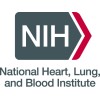
Microbicides Acceptability Among Sexually Active Young Women
HIV InfectionsATN 062 is designed to gain scientific knowledge of microbicide-use adherence, acceptability, and attitudes among sexually active young women

The Effect of Bacille Calmette Guerin (BCG) Vaccination on Immune Responses in HIV-Exposed and Unexposed...
HIV InfectionsBackground: Each year, more than half a million babies are infected with HIV by mother-to child transmission in developing countries. Many of these babies get sick and develop HIV disease (AIDS) at a very young age. Exposure to other infectious diseases may influence this early progression to AIDS. BCG is a live tuberculosis vaccine made from cow tuberculosis. It is routinely given at birth to most babies, also to babies born to HIV-positive mothers. BCG can cause disease (BCGosis) in HIV-infected babies. More importantly, BCG may also trigger immune responses in the body that lead to the spread of the HIV virus and early progression to AIDS. Objective(s) and Hypothesis: The researchers will investigate whether BCG causes progression of HIV by doing a clinical trial: babies born to HIV-positive mothers will be randomly allocated to get the BCG vaccine at birth or at 14 weeks of age. In these 2 groups of babies, the researchers will compare: The percentage of babies who progress to HIV disease Blood markers of HIV disease (the amount of virus and protective white blood cells in the body) The body's immune response to BCG vaccine and other childhood vaccines The percentage of children who develop BCG scarring, BCG vaccine complications and tuberculosis. Potential Impact: BCG is the most widely given vaccine worldwide and is routinely given to babies born to HIV-positive mothers in developing countries. Any effect that BCG has on HIV progression in babies will have a significant public health impact in settings with a high burden of HIV disease.

Influence of Pravastatin on Carotid Artery Structure and Function in HIV-infected Patients Under...
HIV InfectionCarotid Atherosclerosis1 moreThe advent of new antiretroviral agents, in particular Highly Active Antiretroviral Therapy (HAART), spectacularly reduced HIV-associated morbidity and mortality. However, new complications have appeared in HIV-infected patients treated by with HAART such as dyslipidemia, insulin resistance, diabetes mellitus, and related cardiovascular complications including acute coronary syndromes, peripheral vascular disease, and stroke have been reported. A linear association has been proved between increased intima-media thickness of the common carotid artery (CCA-IMT), aortic stiffness (pulse wave velocity [aPWV]) and incidence of cardiovascular events suggesting that IMT and aPWV could be considered as an early marker of atherosclerosis. The progression of IMT has been shown to be predictive of cardiovascular events. Case control and longitudinal studies but not all have suggested an increase CCA-IMT in HIV-infected patients under HAART compared with non-HIV infected patients with different progression. The aim of this study was to examine the effects of pravastatin on CCA-IMT and aortic stiffness in dyslipidemic HIV-infected patients receiving HAART by using a high-resolution echotracking system. Patients in the pravastatin group were consecutively recruited in four department of infectious diseases if they fulfilled the following criteria : (1) HIV-infected treated with HAART for > 12 months 2) with dyslipidemia, defined as fasting serum LDL cholesterol > 160 mg/dL before initiation of pravastatin, (3) treated with pravastatin > 12 months and one more coronary risk factor. The patients in the control group were selected consecutively in the same departments among 1) HIV-infected patients treated with HAART > 12 months 2) fasting serum LDL cholesterol > 160 mg/dL 3) without lipid-lowering drugs and one more coronary risk factor. Cases and control patients were matched for age, gender and tobacco consumption. Using data from Mercie et al., inclusion of 42 patients in pravastatin and control groups was the minimum sample size needed for detection of a 6.5% difference in CCA-IMT, in a two-sided test (a = 0.05, b = 0.20). The protocol of the study, sponsored by the French Society of Cardiology was approved by the Committee for the Protection of Human Subjects in Biomedical Research of Pitié-Salpétrière University hospital in Paris. Written informed consent to participate in the study was obtained from each patient.

Trial of SAVVY and HIV in Ghana
HIV InfectionsHeterosexual contact is now the primary route of transmission for HIV worldwide. This study is a phase 3 trial designed to determine the effectiveness and safety of the 1.0% C31G (SAVVY) vaginal gel for the prevention of male-to-female transmission of HIV among women at high risk.

AIDS-Associated Cardiomyopathy
Acquired Immunodeficiency SyndromeHeart Diseases2 moreTo define the incidence and prevalence of AIDS-associated cardiomyopathy. Also, to conduct immunopathology and serologic studies in endomyocardial biopsies and autopsy tissues.

HIV-Associated Heart Disease
Cardiovascular DiseasesHeart Diseases3 moreTo develop natural history data regarding the incidence, clinical course, prognosis, and effects of treatment with anti-viral and immunosuppressive agents on HIV-associated heart disease. A second part of the study evaluated a number of possible mechanisms underlying the development of HIV heart disease.

Effectiveness of AIDS Antibody Screening
Acquired Immunodeficiency SyndromeBlood Transfusion1 moreTo determine the effectiveness of efforts to eliminate the human immunodeficiency virus (HIV) from whole blood and blood components in the blood supply.

Prospective Study of HIV Infection in Hemophiliacs
Acquired Immunodeficiency SyndromeHIV Infections7 moreTo examine mechanisms of individual differences in the progression of HIV infection in hemophiliacs.

HIV Diversity and Pathogenesis in Donor-Recipient Clusters
Acquired Immunodeficiency SyndromeBlood Transfusion2 moreTo assess, in donor-recipient clusters, current models of HIV-1 genetic evolution and pathogenesis, based on the sequence diversity displayed by this lentivirus.

The Use of Bacteriophage Phi X174 to Assess the Immune Competence of HIV-Infected Patients In Vivo...
HIV InfectionsThe objective of this study is to evaluate the safety and utility of bacteriophage phi X174 immunization as a tool to assess the immune competence of HIV-infected patients at different stages of disease in vivo, and to assess the impact of viral load levels and therapy-induced changes in viral load levels on the response to immunization with the neo-antigen bacteriophage phi X174. Bacteriophage phi X174 immunization is a method that has been in use for more than 25 years to assess the immunity of patients with various types of primary and secondary immunodeficiencies, including 48 HIV-infected patients. This is a prospective open-label, controlled study which will enroll 39 HIV-infected patients and 13 healthy volunteers, male or female with 18 years of age and over. The HIV-infected patients will be divided into 3 groups according to their CD4 cell count: less than 200 cells/mm(3), between 200 and 500 cells/mm(3) and greater than 500 cells/mm(3). After screening and a two week pre-study evaluation, all eligible participants will receive a primary, secondary and tertiary immunization with 2 x 10(9) PFU/kg of bacteriophage phi X174 six weeks apart. Patients who present with detectable levels of viral load at entry will be offered a more effective antiviral drug regimen. Patients will have to be on a stable antiviral regimen for at least one month prior to receiving the primary immunization. Patients will return for visits 1, 2 and 4 weeks after each immunization for clinical and laboratory evaluations. The study endpoints are: safety (as measured by incidence of adverse events, CD4 cell count and HIV plasma RNA), kinetics of bacteriophage clearance following primary immunization, quantitation of bacteriophage phi X174 specific antibody titers following primary, secondary and tertiary immunizations and determination of qualitative and quantitative antibody isotype switching following secondary and tertiary immunizations.
